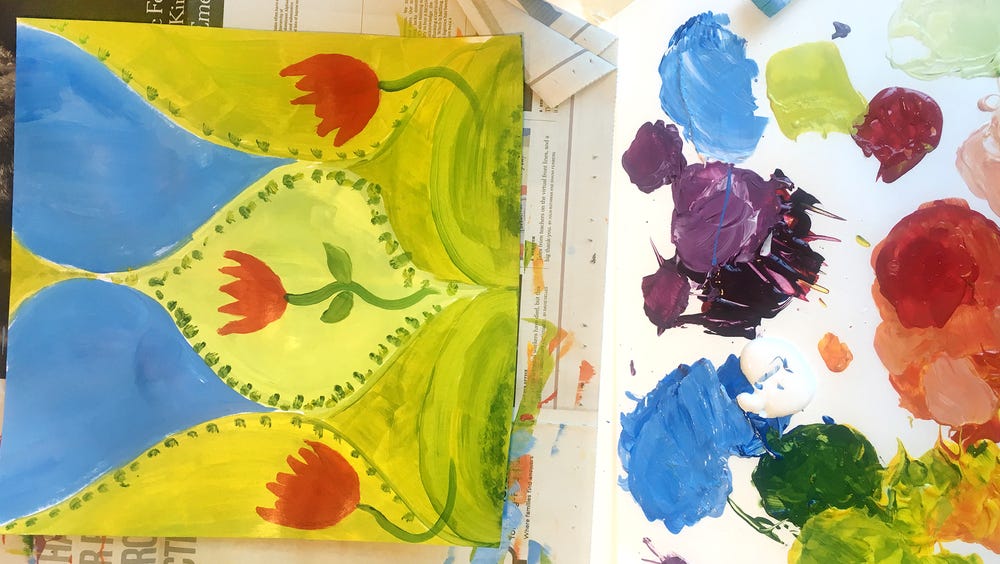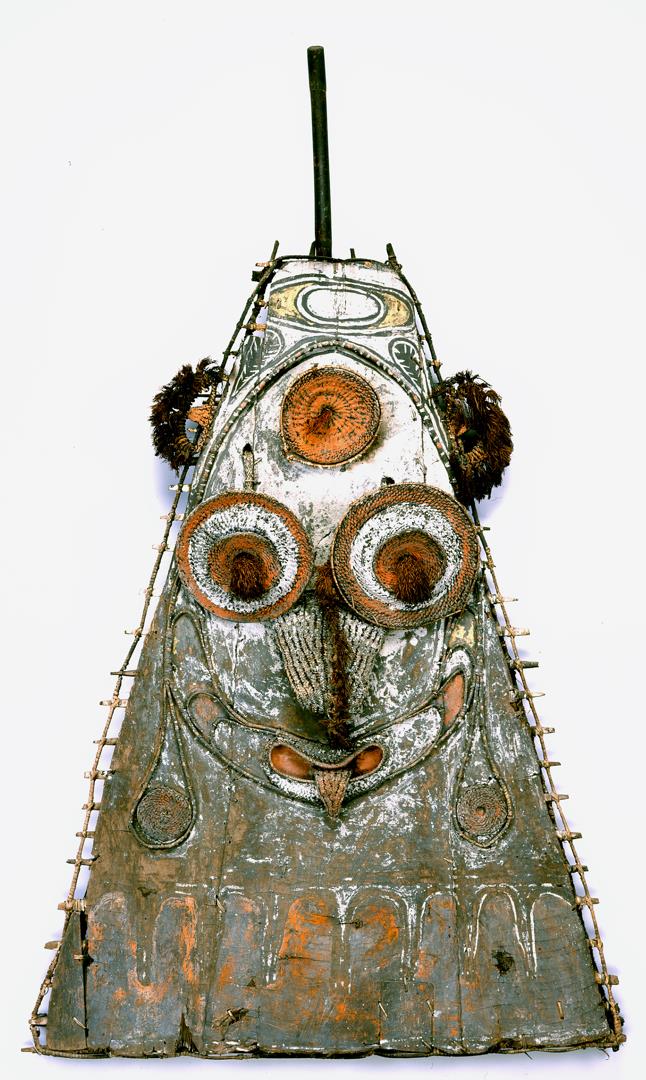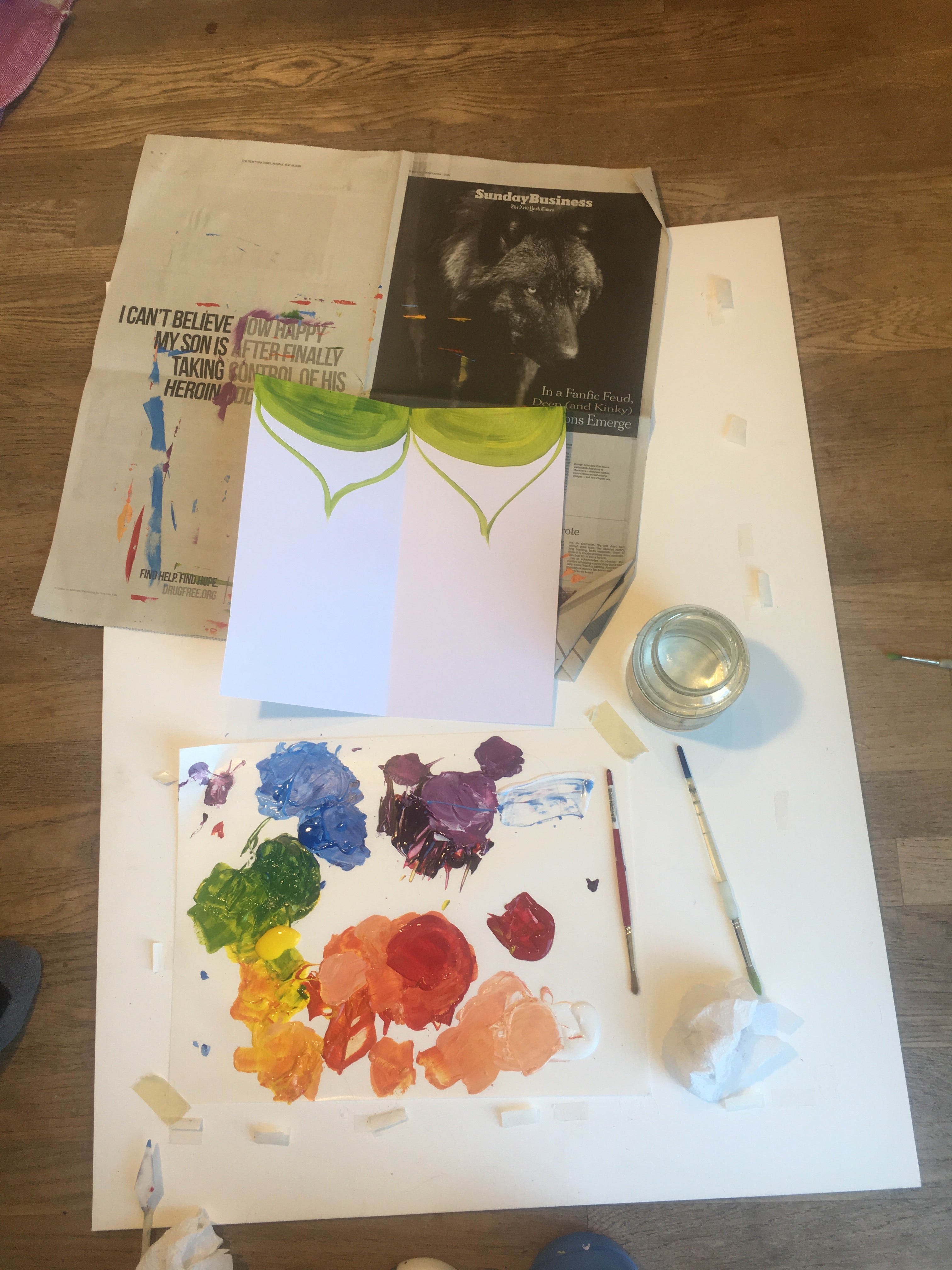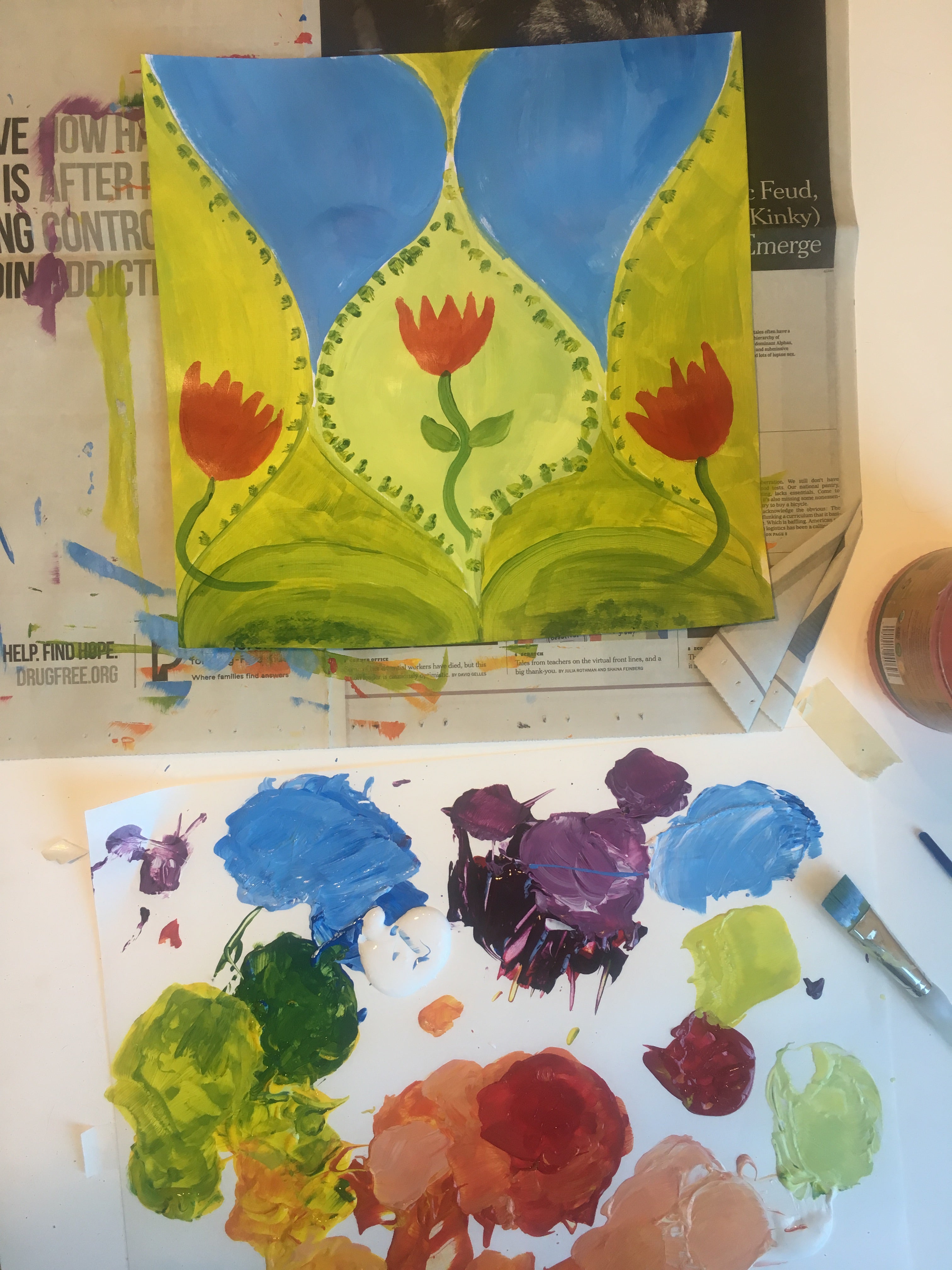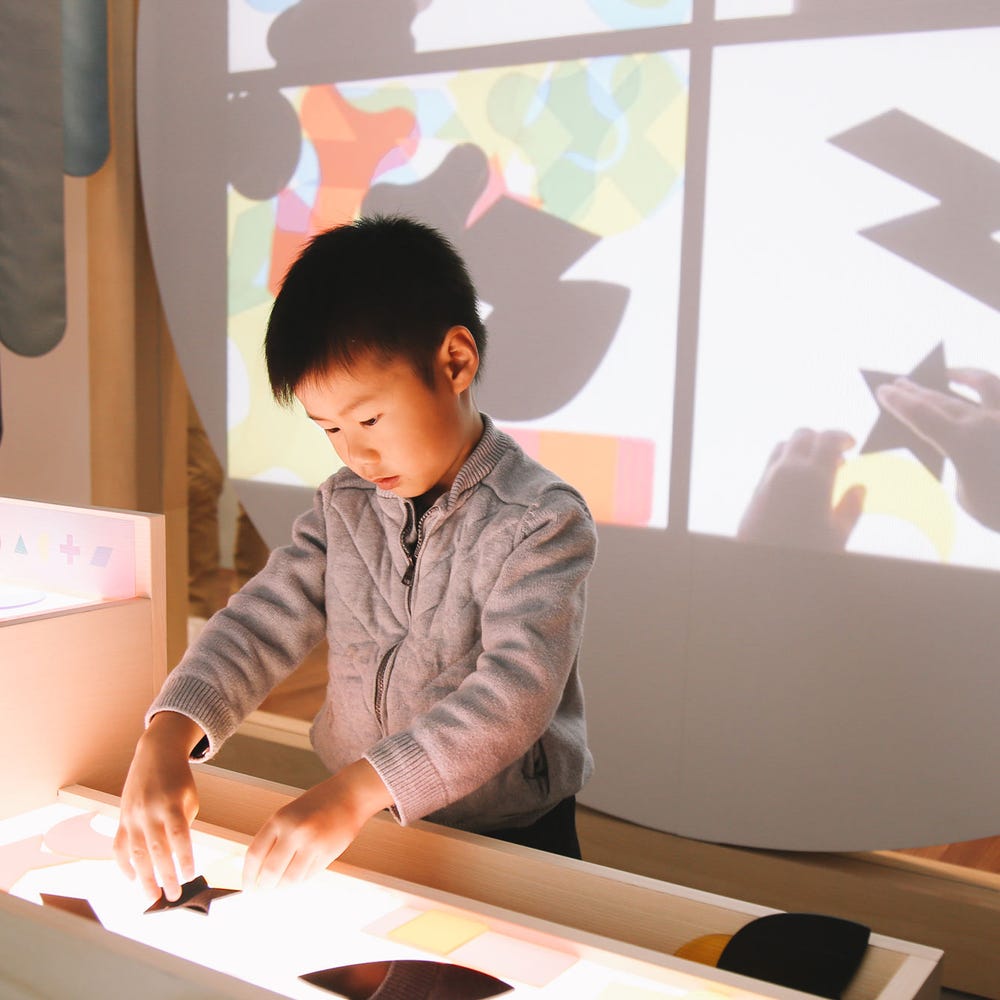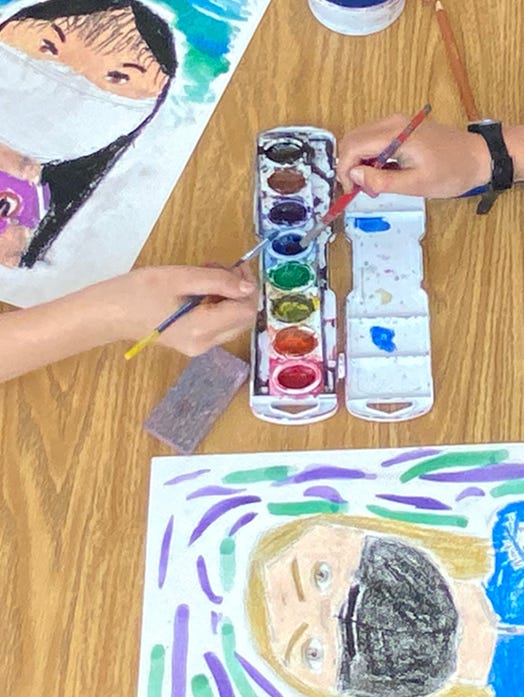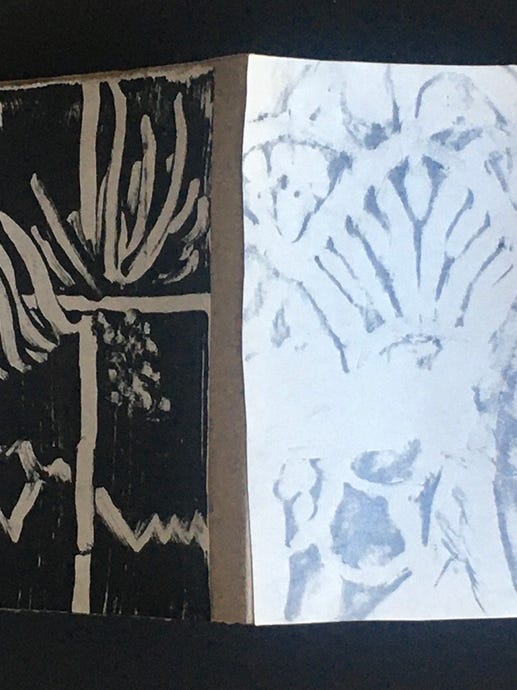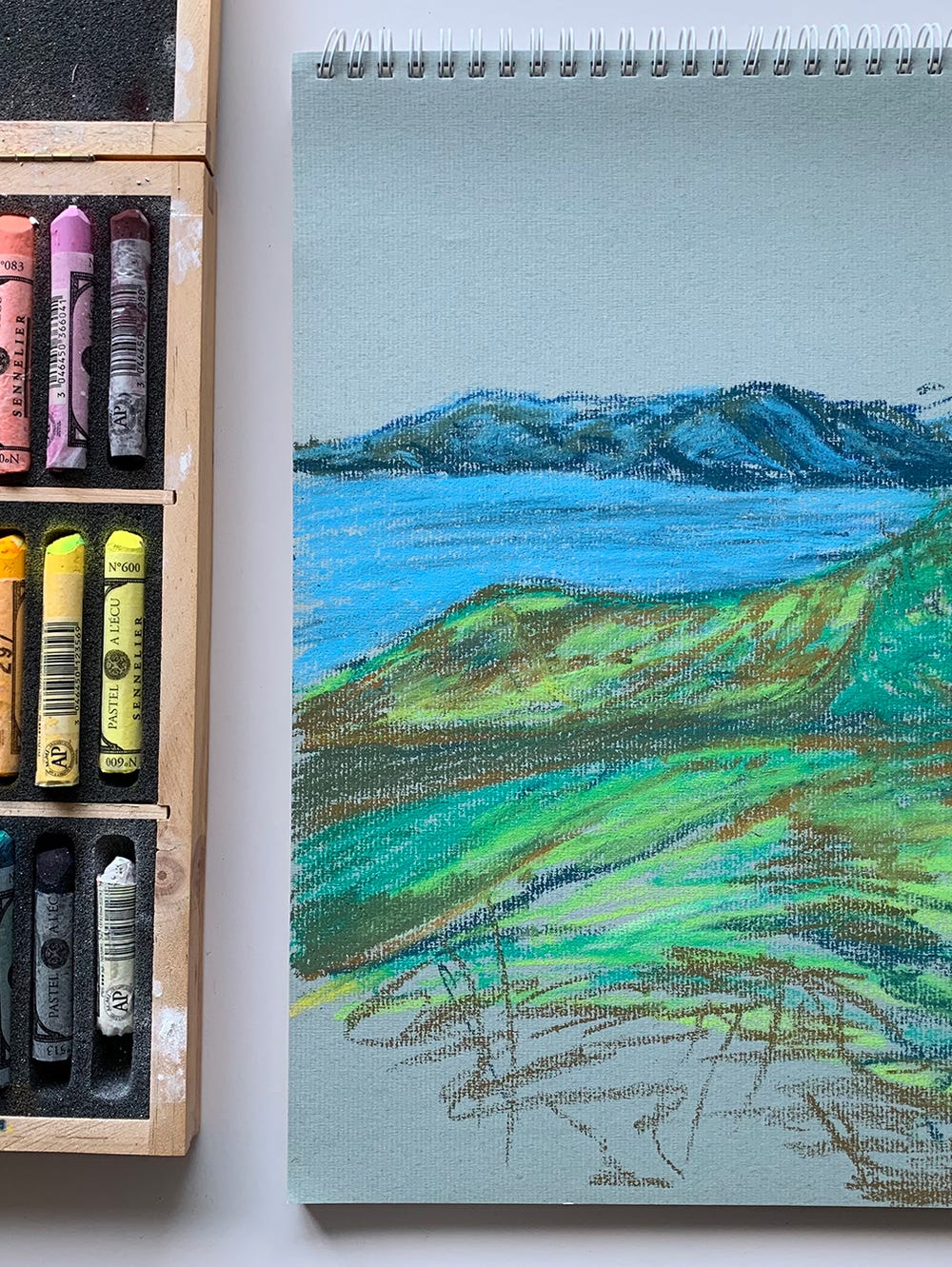de Youngsters Studio: Color and Symmetry Inspired by Looking at Art Across the Collection
By Jennie Smith
September 11, 2020
Exploring symmetry and color throughout the de Young’s collection is one of our favorite activities. Second-grade students who participate in our guided school program experience the following activity as part of their visit. Participate in this project as a family and see the multiple ways you can mix color and create symmetry.
Before starting, take a moment to look at this gable mask from Papua New Guinea. What elements do you notice first that are symmetrical (the same on both sides)? What additional details can you find? Are these also symmetrical? What do you notice about how the artist used color? Is there any part of the work that is not symmetrical?
Materials
- Palette (paper plate or other flat surface)
- Acrylic paints in red, yellow, blue, and white
- Square piece of thick paper such as 12 x12 in. poster board
- Flat or round paintbrushes
- Color wheel (optional)
- Water cup
- Paper towels
Questions to Consider
- How can you show symmetry through color?
- How can you show symmetry through shape and line?
- Can it be symmetrical in shape and different in color?
- Will you paint something that is abstract or realistic?
Steps
- Using a paper plate or other flat washable surface, assemble a palette of primary colors: red, yellow, and blue.
- Fold paper edge to edge, or corner to corner, to create a line of symmetry.
- Start the painting process by using a paintbrush to mix a few colors on your palette. You can consult a color wheel (easily available online) to figure out how to mix secondary colors, or find out by experimenting.
- Wash and pat your paintbrush on the paper towel in between colors.
- As you paint your composition, remember to think about how to create a design that is symmetrical.
- About halfway through the painting process, you can add white paint to further explore the color-mixing process.
- While painting, describe the colors that you created using something from real life that the color reminds you of, such as “rusty orange” for orange. As you paint, create a key of descriptive color names that others can use to look closely at your work of art when you are done.
Extra challenge: Use your brush to create thick strokes, thin lines, or dots, layering your colors (acrylic paint dries very quickly) and covering your entire paper.
Reflect
After creating your symmetrical painting, consider the following questions:
- Of all the colors you made, which ones surprised you?
- If you could make this artwork again, what would you do differently?
- If you painted with your family, take a minute to think about the following: What do you notice about everyone’s work? How did you each use symmetry? What kinds of colors did your family members mix?
Share
We would love to see what you make too, so please tag us on any social-media platform using the hashtag #deyoungsters or email us at families@famsf.org.
Image credit
- Gable mask from ceremonial house facade, 20th century. Torembi Village, Sawos people, New Guinea. Sago palm petiole, wood, bamboo, pigment, and sago leaf fiber, 63 in. (160 cm). Fine Arts Museums of San Francisco, Museum purchase, Mrs. Paul L. Wattis Fund, 2000.172.7
Text by Jennie Smith, senior teaching artist.
